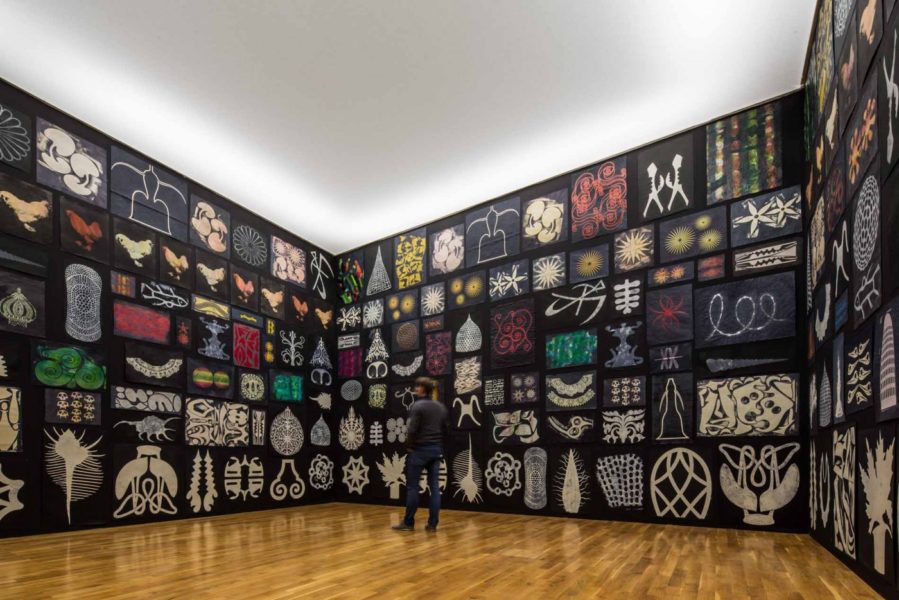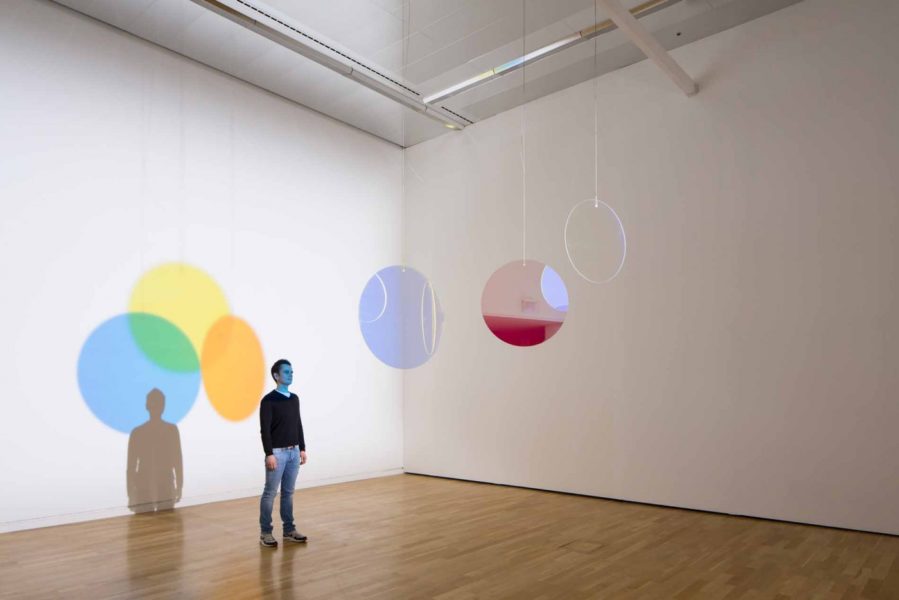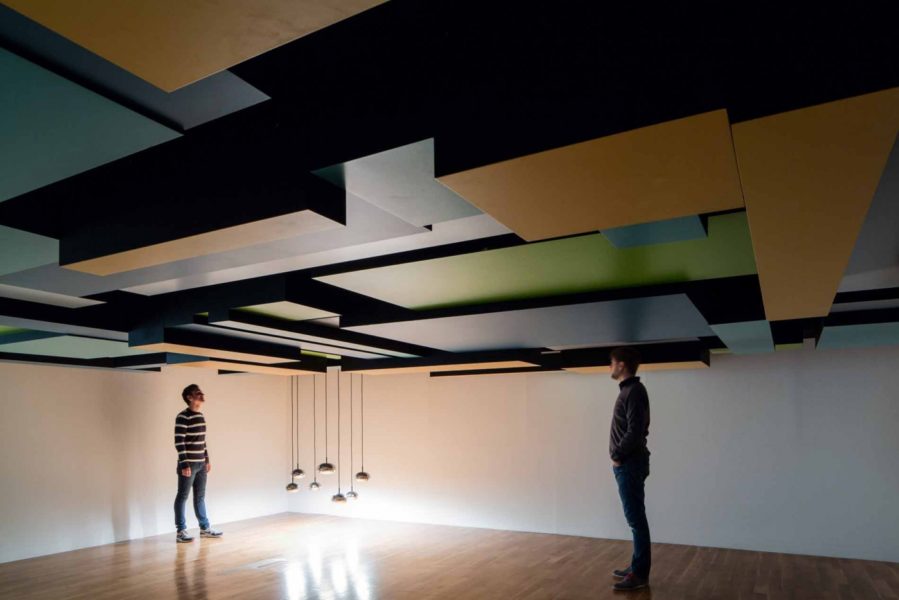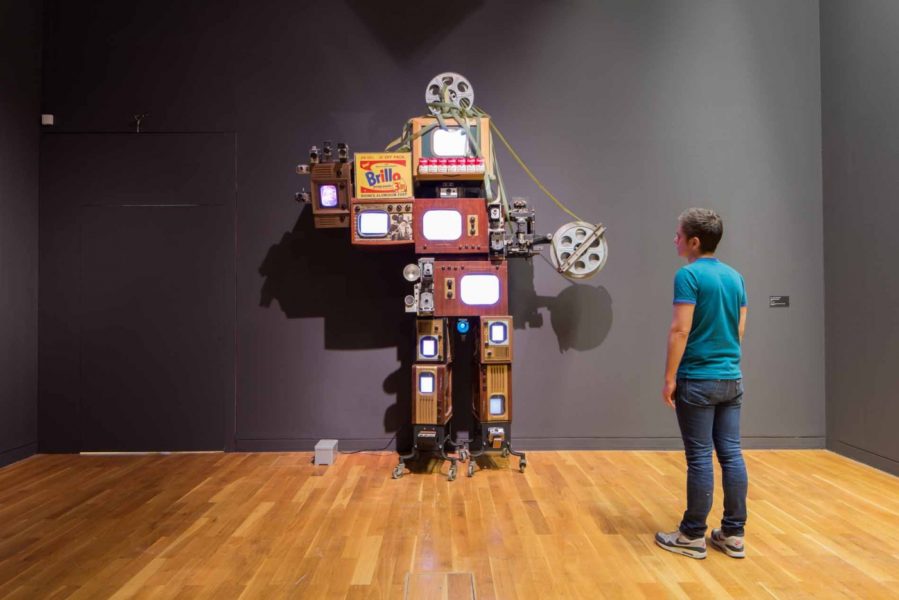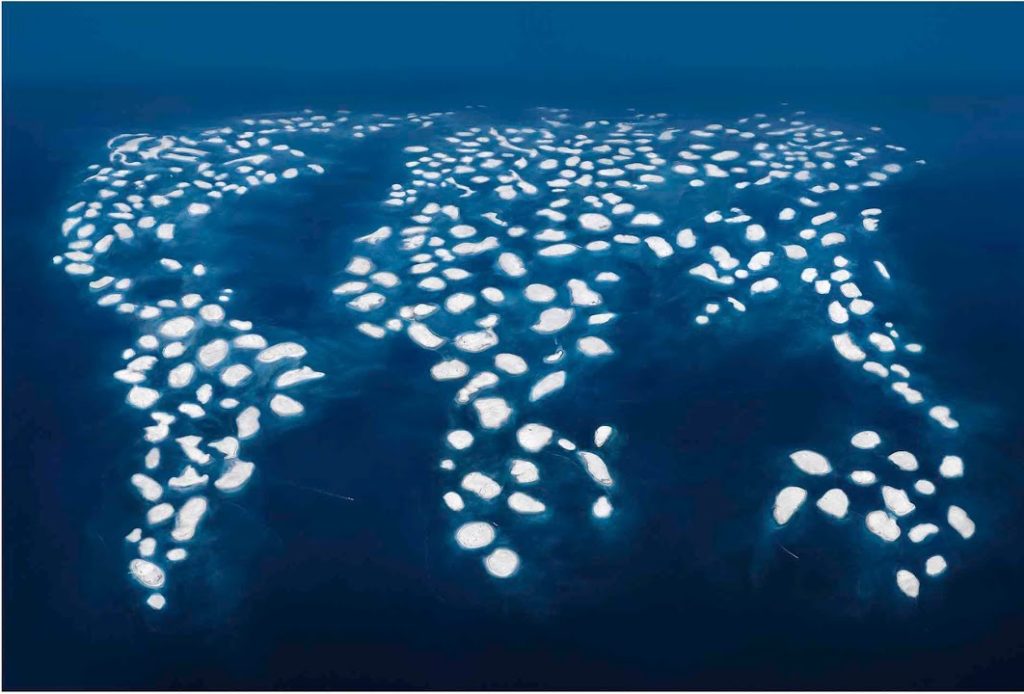Spuren der Moderne
Ausstellungsansichten
Infos
Im Jubiläumsjahr des Kunstmuseum Wolfsburg – es feiert 2014 mit einer groß angelegten Kokoschka-Ausstellung sein 20-jähriges Bestehen – nimmt das Haus mit „Spuren der Moderne” thematische Sondierbohrungen vor und macht sich auf die Spurensuche innerhalb der eigenen Sammlung. Seit 1994 sammelt das Kunstmuseum Wolfsburg internationale zeitgenössische Kunst. Mit Werken rund um die Minimal Art, Conceptual Art, Arte Povera, Body Art und Medienkunst wurde die Basis gelegt. Die Sammlungspräsentation „Spuren der Moderne” wird auf rund 1000 Quadratmetern im oberen Umlauf der Museumshalle zu sehen sein.
“What looks good today may not look good tomorrow” lauten Titel und Inhalt einer Arbeit von Michel Majerus von 1999. Damit bringt er auf den Punkt, was Charles Baudelaire 1863 beschrieb, als er den Begriff der „Modernität” als Ausdruck von Zeitgeist prägte: Vergänglich und flüchtig sei diese. Als Zeitbegriff ist die Moderne schwer zu erfassen – unbestreitbar sind jedoch einige ihrer bestimmenden Inhalte und Ästhetiken. In einem thematisch gegliederten Parcours, der die Felder Porträt, darstellende Malerei, Abstraktion, Architektur und Design, Wissenschaft und Technik, Aufklärung und Spiritualität sowie Global Art umfasst, wird hier die Frage nach dem aktuellen Einfluss der Moderne in den Raum gestellt. Wie wird die Moderne in Werken von Künstlern wie Julius Popp, Elizabeth Peyton, Thomas Schütte, Cindy Sherman, Nam June Paik, Neo Rauch, Jeppe Hein, Jan Dibbets, John M Armleder, Tony Cragg, Gary Hume, Tobias Rehberger, Andreas Gursky, Philip Taaffe, Olafur Eliasson, Rebecca Horn, Gerhard Merz, Ola Kolehmainen oder James Turrell heute rezipiert?
Unsere digitale Gegenwart kennt kaum noch Grenzen. Mit einem Mausklick bewegen wir uns virtuell in anderen Ländern, Zeitzonen und Kulturen – via Skype nehmen wir visuell am Leben anderer teil und können heute an zwei Orten gleichzeitig sein. Der Kommunikationstheoretiker Marshall McLuhan hat schon frühzeitig einen Begriff für diese Entwicklung gefunden – das Global Village. Die tatsächlichen Distanzen werden erst wieder spürbar, wenn außereuropäische Gesellschaften mit kulturellen und ästhetischen Geltungsbedürfnissen aufwarten, die von westlichen Vorstellungen abweichen. Die Konturen der Moderne im westlichen Sinne scheinen sich aufzulösen.
Durch die kulturellen Wechselwirkungen in diesem Global Village stellen sich neue Fragen an die Moderne, die auch ihre Aktualität in ihrem westlichen Ursprungskontext betreffen. Im 21. Jahrhundert hat der Pluralismus nicht nur die Kunst erfasst, sondern auch Gesellschaftsformen, Lebensstile und Glaubensrichtungen. Sind die Ideen der Moderne vor diesem Hintergrund tatsächlich überholt? Was ist aus dem unerschütterlichen Fortschrittsglauben, der Faszination für Wissenschaft und Technik, dem kulturellen Reformwillen und den formalen Innovationen und Perspektivwechseln in der bildenden Kunst geworden? Was für die Wissenschaft der Forschungserfolg war, dem entsprach in der Kunst der Klassischen Moderne im 20. Jahrhundert die ästhetische Revolution. Die Abstraktion verdrängte die Figuration und führte bis hin zur Befreiung der Form vom Gegenstand und der Farbe von der Form.
Waren in der Postmoderne noch Abgrenzungsversuche zu diesen Neuerungen spürbar, verhandeln Künstler der zweiten Hälfte des 20. und im 21. Jahrhunderts Kunstrichtungen der Moderne wie beispielsweise den Kubismus (z. B. Jan Dibbets), den Konstruktivismus (z. B. Tony Cragg), den Surrealismus (z. B. Neo Rauch) oder die Farbfeldmalerei (z. B. Joseph Marioni, James Turrell) neu. Die Affinität zur Wissenschaft und Technik spiegelt sich indessen zum Beispiel im Künstleringenieur (z. B. Panamarenko, Nam June Paik, Julius Popp) oder in der Inszenierung von Naturphänomenen (z. B. Olafur Eliasson). Die Ausstellung fasst derartige Verwandtschaften und Wahlverwandtschaften zusammen.
Mit diesem Ausstellungskonzept schließt das Kunstmuseum Wolfsburg an seine in der Museumswelt vermutlich einmalige, wissenschaftliche und ebenso sinnliche Forschungsreise an, auf der es sich mit seinem Programm seit 2006 befindet: die Suche nach der Moderne im 21. Jahrhundert. Vor allem für die thematischen Ausstellungen wie „Die Kunst der Entschleunigung”, „Kunst & Textil” oder „Interieur/Exterieur” ist diese Frage stets der Ausgangspunkt aller Untersuchungen.
Im Herbst 2014 schließlich wird das Kunstmuseum einen Forschungsband über die Zukunft der Moderne im 21. Jahrhundert mit Beiträgen namhafter Autoren aus Kunst, Kunst-geschichte, Philosophie, Architektur, Soziologie und Kulturwissenschaften veröffentlichen.
Künstler der Ausstellung
John Armleder, Richard Artschwager, Hussein Chalayan, Tony Cragg, Jan Dibbets, Olafur Eliasson, Helmut Federle, Andreas Gursky, Jeppe Hein, Georg Herold, Rebecca Horn, Gary Hume, Sergej Jensen, Anselm Kiefer, Ola Kolehmainen, Michel Majerus, Joseph Marioni, Gerhard Merz, Nam June Paik, Panamarenko, Elizabeth Peyton, Julius Popp, Neo Rauch, Tobias Rehberger, Thomas Schütte, Cindy Sherman, Beat Streuli, Philip Taaffe, James Turrell, Luc Tuymans
